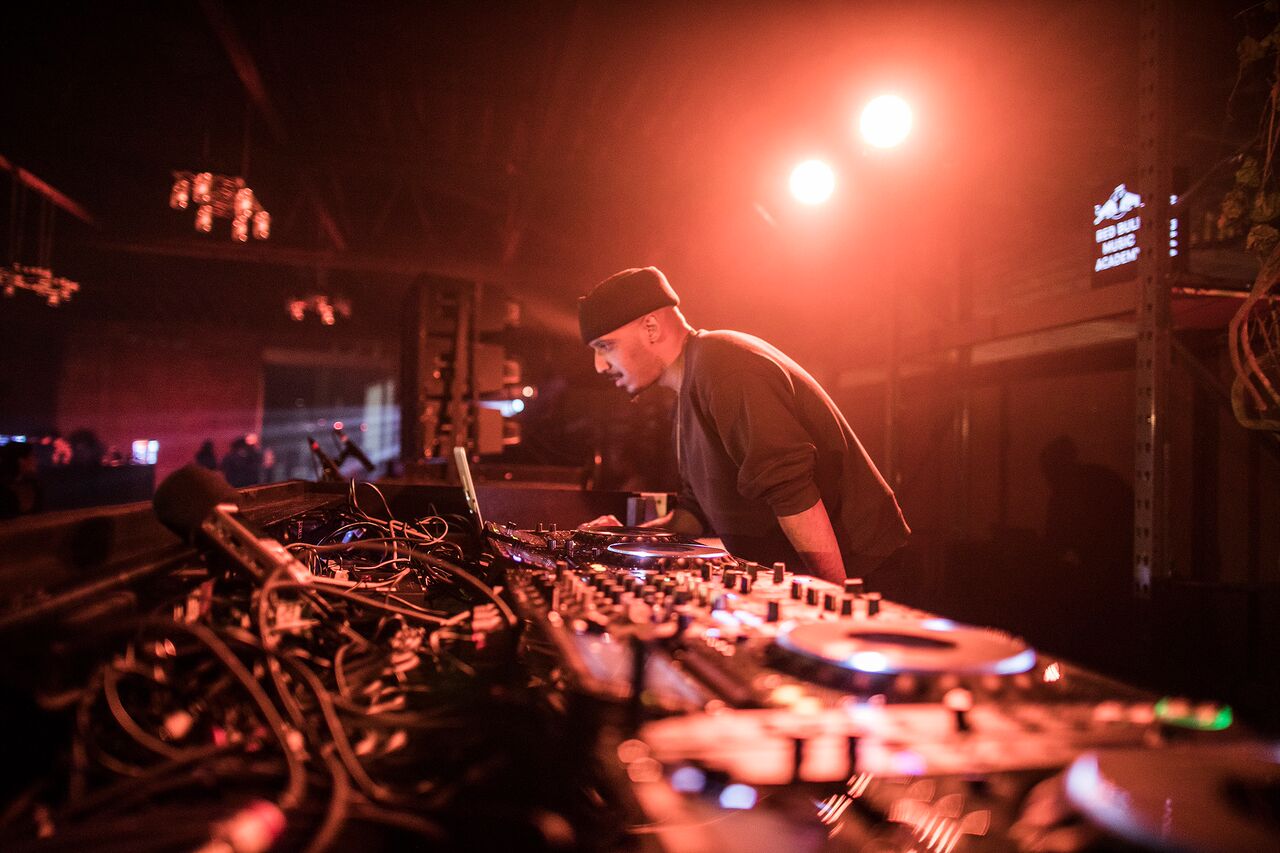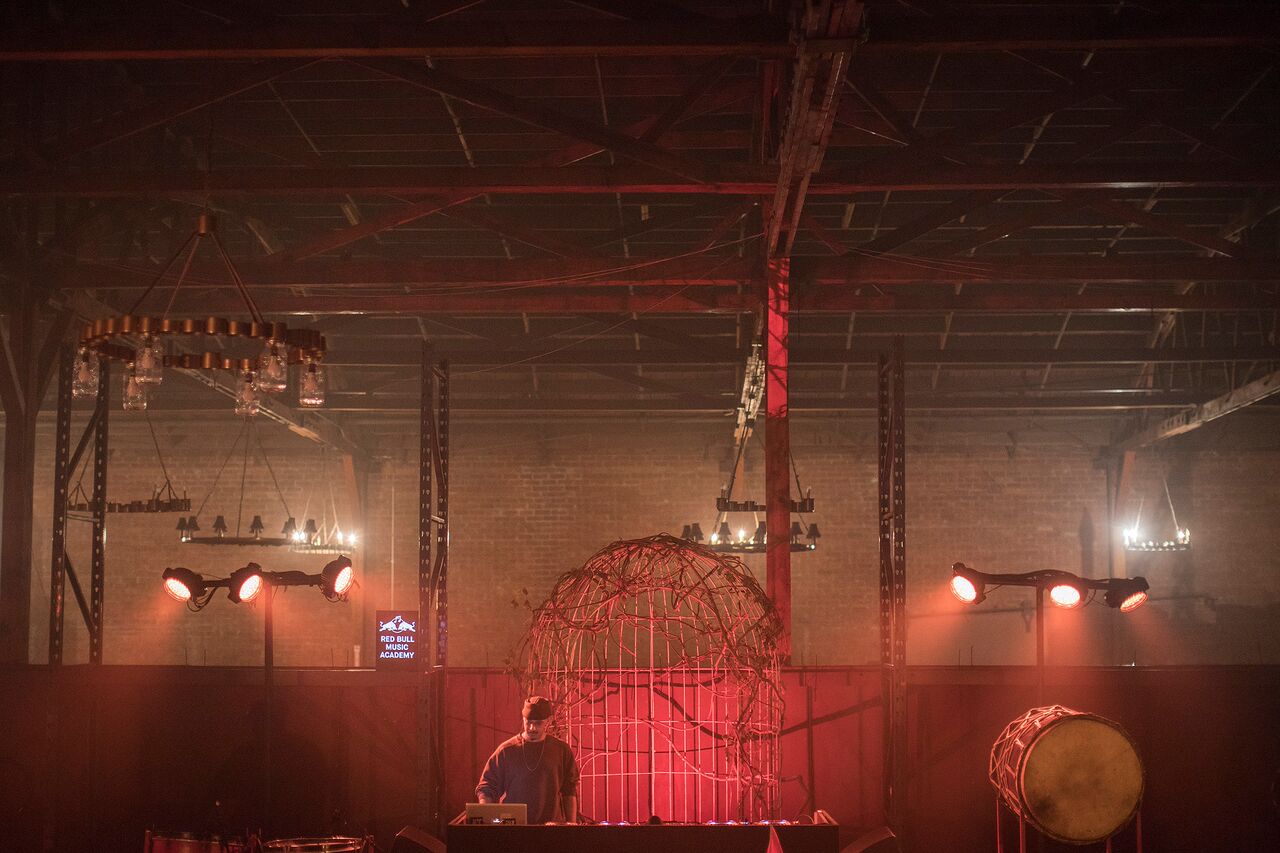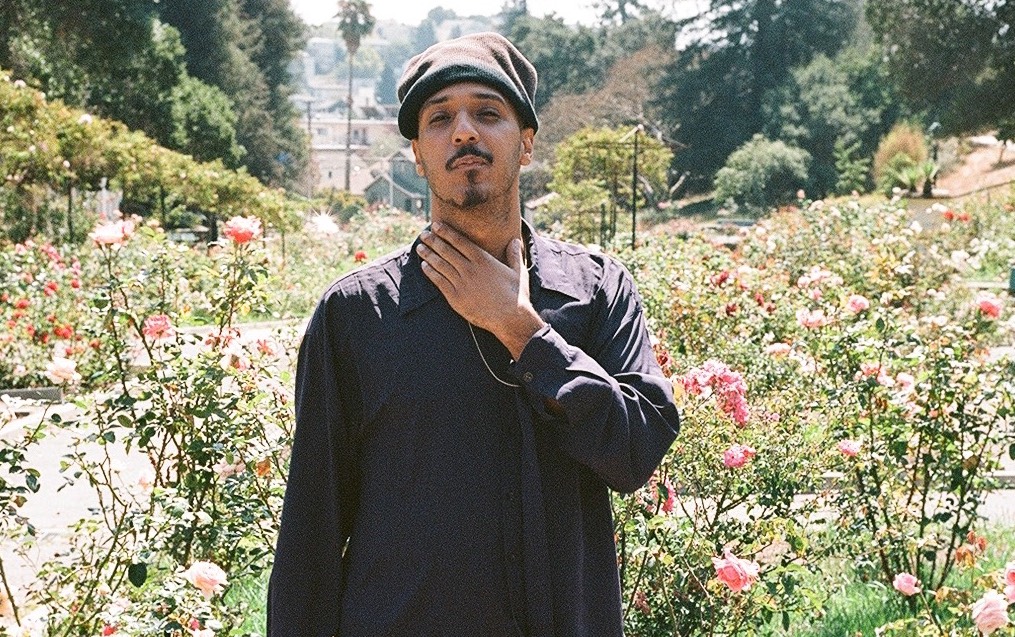Over the phone, Kelman Duran speaks with subdued confidence. For the Dominican multimedia artist with impressive production credits and a collection of impactful short films under his belt, steady self-assurance is the product of a life spent navigating choppy waters.
Duran explains that his approach to production stems from nostalgia “for where [he’s] from and being a lil’ badass kid in 7th grade hitting house parties” in Manhattan’s Washington Heights. In his personal New York, where the sounds of the Caribbean blared from apartment windows and DJ Playero mixtapes were prized possessions, Duran’s career as a producer started like thousands of others.
“I was part of a crew in Washington Heights listening to and making dembow and reggaeton. We used to get vinyls and make beats and had a little studio where we made hundreds of tracks and just never put them out.”

That extensive catalog from his youth may never see the light of day, but its legacy lives on in the artist’s current work. After relocating to the West Coast, Duran has spent time reclaiming and exploring his childhood growing up on 188th and Audubon. He has churned out a steady stream of club concoctions over the past year, ranging from foggy Mobb Deep refixes to addictive La Materialista edits. Whether it’s the airy, ambient textures of his recent Moon Cycles release, or the warped dembow he plays as a resident of LA’s genre-defying Rail Up parties, there’s always a sense of cohesion in his work. Duran has built a specific, sonic universe for himself, one that’s found him thriving in the club circuit, with appearances on numerous episodes of NTS Radio, sets alongside peers like Mexican crew NAAFI, and most recently, a performance at Red Bull Music Academy’s inaugural LA edition as part of the Rail Up crew.
“I don’t think there’s ever been a time in my life where I didn’t feel the effects of white supremacy.”
But perhaps most importantly, Duran never shies away from politics in his work. On his recent 1804 Kids EP, he explores the legacy of black rebellion passed down to him through the Haitian Revolution, re-envisioning afro-diasporic rhythms like reggaeton and dancehall through a foggy lens. Southern California’s Latinx community has provided a space for this political experimentation, however different it may be from his home in Washington Heights.
“LA allows me to play anything from ambient edits to political speeches to dembow loops and no one blinks…Latinx people in LA love that rhythm because it is also a part of their history, the Black and Latinx intertwined histories of Mexico, Central, and South America,” he explains.
Kelman’s present is informed by a lifetime of dealing with racism and toxic, jingoistic attitudes. Duran’s years in college outside of New York City brought him a rude awakening to a world of entitled, emboldened and often xenophobic classmates — many with ideas so foreign to him they earned a menacing side-eye and an audible “What the fuck?”
“I remember a kid literally raising his hand to say black people should stop smoking crack and another kid saying Arabs were barbarians,” he says. “I don’t think there’s ever been a time in my life where I didn’t feel the effects of white supremacy — not even in college.”
Post-graduation, Duran found himself traversing an art world too often blind to its own deficiencies, hegemonic systems, and quiet racism.
“I made art before I took music seriously…my work was always associated with politics, but there is a limit to what art can change when you have a strictly studio practice.”

That desire to be in the field led Duran to South Dakota’s Pine Ridge Reservation, home to the Ogala Lakota tribe. There, he created a number of short films and immersed himself in a culture that in turn treated him like family. Pine Ridge is one of the poorest reservations in the area; census data from 2014 found that over 52 percent of its residents lived below the poverty line, according to Al Jazeera. Kelman describes a haunting energy on the grounds, one that is “a direct result of the genocide committed by the U.S. army and policies instituted by the U.S. government.” Never concerned with the opinions of gallery owners or art buyers blind to the perils of marginalized groups, Kelman’s work doesn’t bother to explain U.S. policy. In his view, images of native people traveling miles away from their homes in search of clean water is evidence enough of the injustices afflicting the Lakota. He refuses to walk imperialist empathizers through the nation’s crimes.
It’s clear that respect for humanity in the most vulnerable sectors of society is deeply embedded in Kelman’s artistic practice. Still, that’s not to say that he doesn’t acknowledge the tangled web of privilege that gave him the ability to leave the reservation at a moment’s notice. “I think that my position in terms of inserting myself in places where people are most vulnerable is sometimes naive…I am extremely privileged compared to Lakotas, I can leave and come to the reservation as I wish; they can’t, they actually live in an open air prison,” he explains.
At a time when the language of social justice is increasingly visible in the mainstream, and appeals for activism can feel performative and hollow, artists like Kelman Duran and spaces like Rail Up remain an important line of defense. By honoring these spaces as a refuge for those living on the fringes of a capitalist and white supremacist society, the intentionality that surrounds his artistic practice feels refreshing and vital in the club context. With two more projects in tow and fresh off the heels of Moon Cycles, Kelman Duran is poised to make change in his corner of the club universe.







